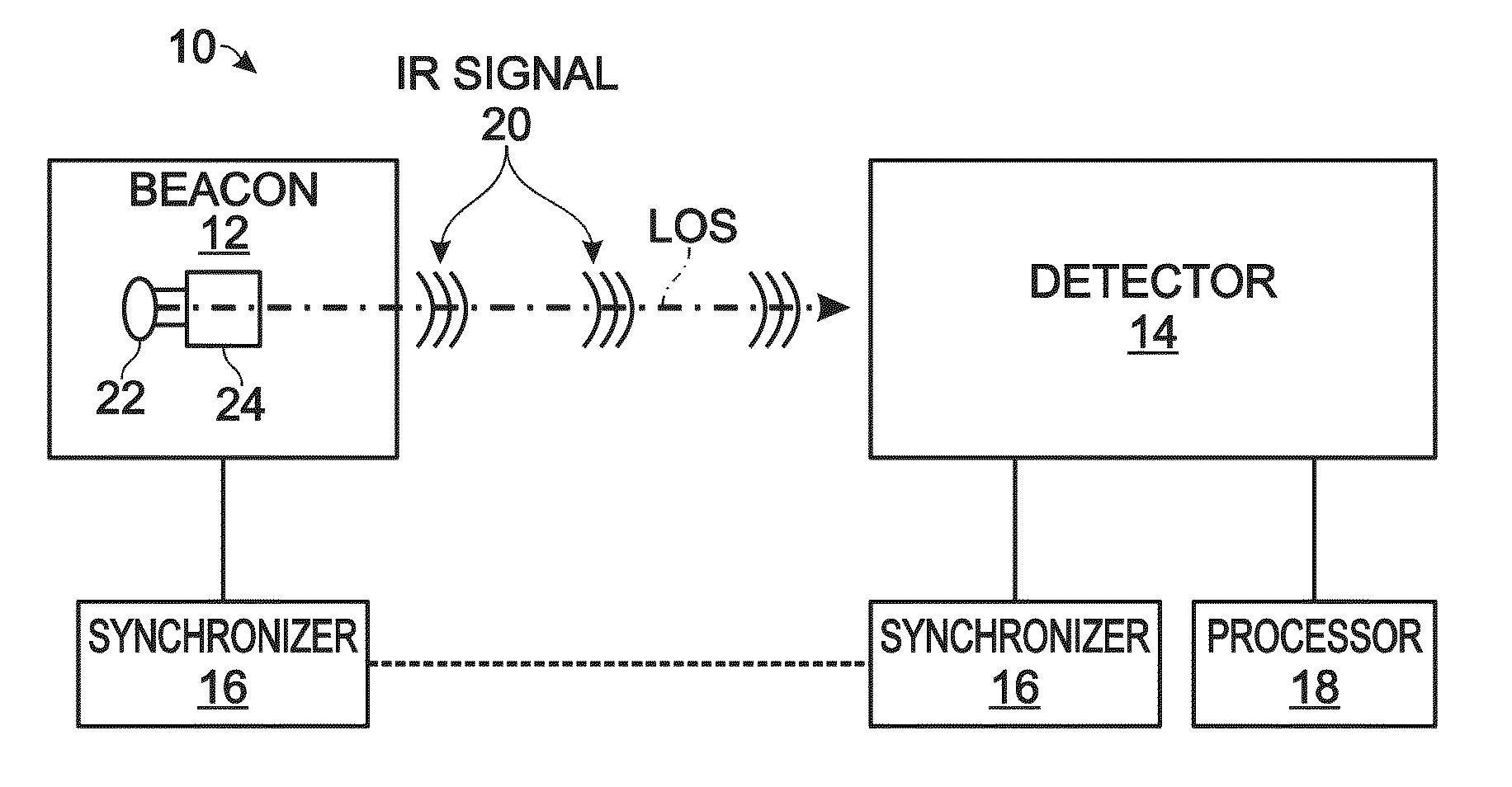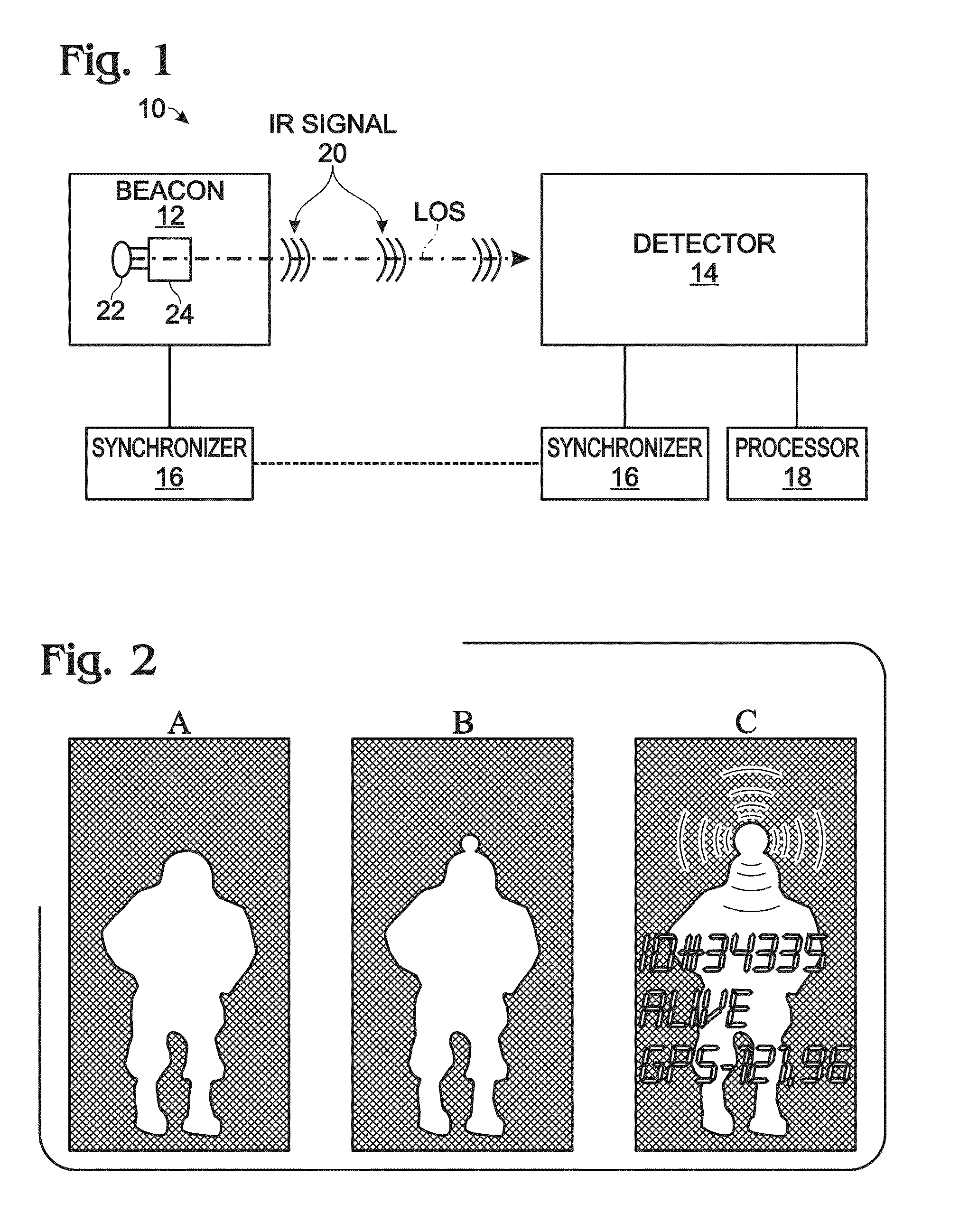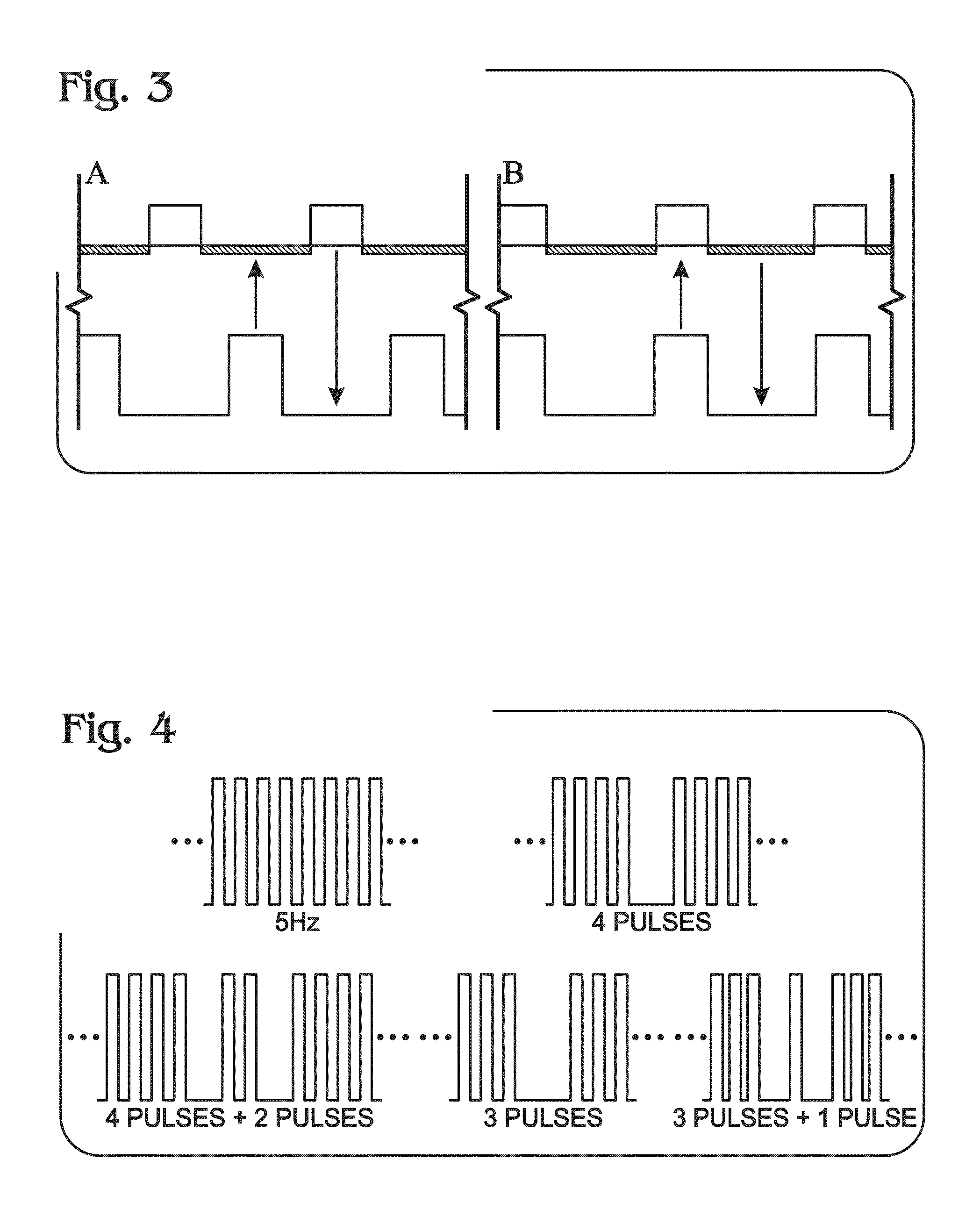Synchronized infrared beacon / infrared detection system
- Summary
- Abstract
- Description
- Claims
- Application Information
AI Technical Summary
Benefits of technology
Problems solved by technology
Method used
Image
Examples
example 1
Comparison of Beacon Systems
[0046]This example compares night vision images obtained using different beacon systems; see FIG. 2. Specifically, FIG. 2 shows three schematic thermal images of a soldier. In these images, the relatively warmer soldier is visible as a light silhouette, due to thermal emissions, against a relatively cooler dark background. Panel A shows the soldier with no beacon (silhouette only). Panel B shows the soldier with an existing helmet-mounted continuous beacon. This beacon alters the thermal profile of the soldier and is visible, when the soldier is upright, as an extension of the soldier's silhouette above the soldier's helmet. Panel C shows the soldier with a helmet-mounted flashing beacon synchronized with an infrared imaging system, in accordance with aspects of the present disclosure. This beacon, which may be detected in an entirely different wavelength regime than that used to collect the image, is portrayed in this example as an overlay that may inclu...
example 2
Exemplary Synchronization Protocols
[0047]This example describes exemplary protocols for synchronizing an infrared beacon and an infrared camera; see FIG. 3. Specifically, FIG. 3 shows schematic representations of two such synchronization protocols. Panel A shows a first protocol: in synch, half periodicity delay; matching on-to-on times between infrared beacon and infrared detector. Panel B shows a second protocol: in synch, zero delay; matching on-and-off times between infrared beacon and infrared detector. More generally, the synchronizer may use any suitable or desired protocols, depending on the emitter, the detector, the type of information to be captured and analyzed, and so on.
[0048]In special situations, for example when synchronization is denied or is intermittent, or when the frequency of the beacon signal frequency is low, among others, data encoding and decoding and communication are still possible using the beacon / detector system. The processor can sample the received d...
example 3
Exemplary Pulse Patterns
[0049]This example describes exemplary pulse patterns representing beacon emissions; see FIG. 4. Specifically, FIG. 4 shows five such pulse patterns, all at the same arbitrary frequency. The top left panel shows a constant pattern: on, off, on, off, and so on (e.g., at a fixed frequency, such as 5 Hz). The top right panel shows a variable pattern: four pulses on, one pulse off, and then repeating. The bottom left panel shows another variable pattern: four pulses on, one pulse off, two pulses on, one pulse off, and then repeating. The bottom center panel shows yet another variable pattern: three pulses on, one pulse off, and then repeating. The bottom right panel shows still yet another variable pattern: three pulses on, one pulse off, one pulse on, one pulse off, and then repeating. These patterns are not exhaustive. For example, the off times may be variable and / or the patterns themselves may be variable (e.g., mixing schemes shown in the drawing). Generally...
PUM
 Login to View More
Login to View More Abstract
Description
Claims
Application Information
 Login to View More
Login to View More - R&D
- Intellectual Property
- Life Sciences
- Materials
- Tech Scout
- Unparalleled Data Quality
- Higher Quality Content
- 60% Fewer Hallucinations
Browse by: Latest US Patents, China's latest patents, Technical Efficacy Thesaurus, Application Domain, Technology Topic, Popular Technical Reports.
© 2025 PatSnap. All rights reserved.Legal|Privacy policy|Modern Slavery Act Transparency Statement|Sitemap|About US| Contact US: help@patsnap.com



